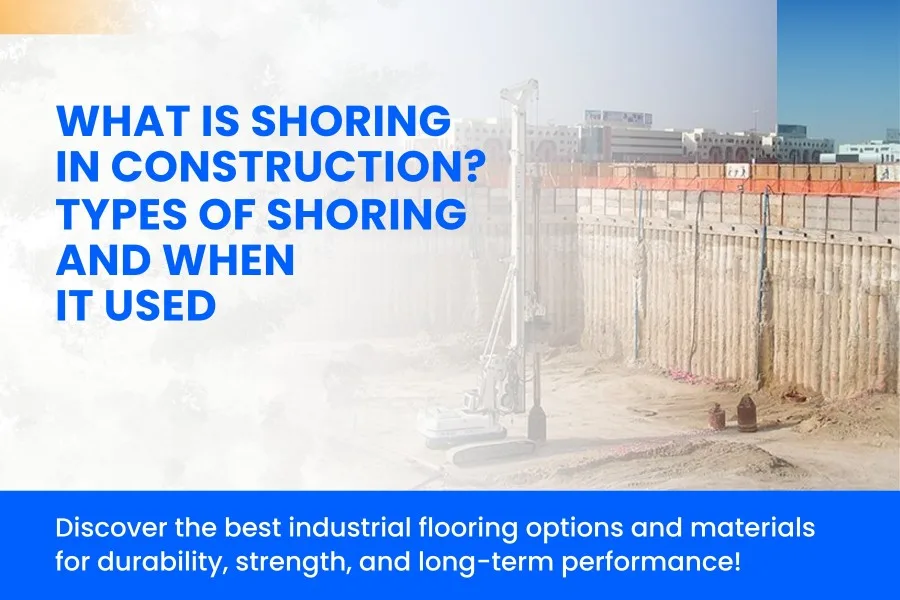When you think of construction, you likely think of workers, machines, and the building process – but one aspect that is critical to the safe and effective management of a construction project is shoring.
Shoring in construction is defined as temporary support that is supplied to a structure during excavation, demolition, or repair. Temporary support is required to provide stability and to prevent collapse as a result of high-risk activities.
In this blog, we will define shoring and the different types of shoring in the construction industry, when and why shoring is necessary, and how construction chemicals affect shoring systems.
Table of Contents
What is Shoring in Construction?
Shoring is a method in construction that temporarily supports a structure for safety or stability during construction, demolition, or repair.
Think of shoring as a temporary safety net that prevents items from falling down when a part of the structure is exposed or is under stress. Shoring is particularly important when there is excavation or demolition work.
For example, if wall systems are being removed by the workers, the system of the remainder of the structure requires temporary support to prevent the structure from collapsing.
Without shoring, the structure could suddenly fail, would create unsafe conditions for workers, and could create costly problems for the project.
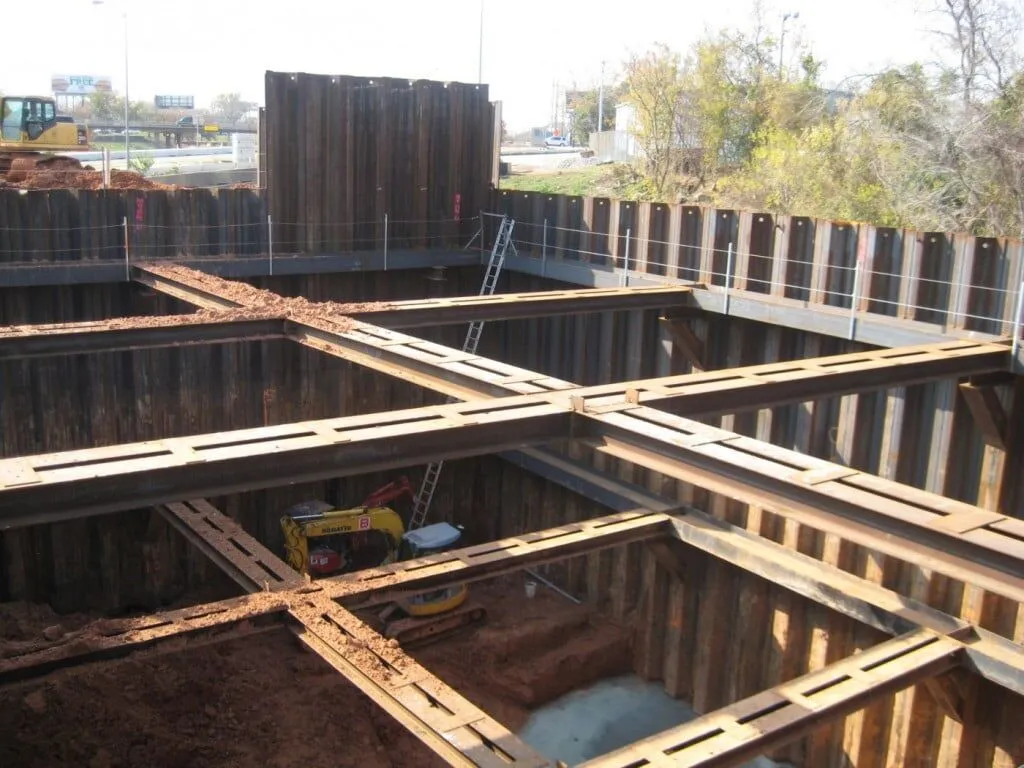
Shoring typically is used as a support system to prop, or bear weight, on props, beams, jacks, and more. When the permanent work has been completed on the structure, then the shoring would be removed.
Why is Shoring Important in Construction?
Shoring is a necessary practice because it prevents accidents, and it helps to stop a structural system from failing. When part of a building is being demolished, excavated or repaired it puts the remainder of the building at risk of not being stable. Shoring helps provide the support needed to keep the rest of the structure in-tact while the work is completed.
Shoring is also useful in the way it provides an even distribution of loads throughout the structure, preventing concentrated forces that may create a condition that can lead to collapse. Shoring will protect workers as well as surrounding properties.
Types of Shoring in Construction
There are many different types of shoring used in construction, depending on the type of construction and the type of loading conditions applied to the structural system.
The shoring type used will depend on the building, scope and size of the project, and any environmental conditions that may be present. Below you will find a summary of the most common types of shoring in construction.
1. Vertical Shoring
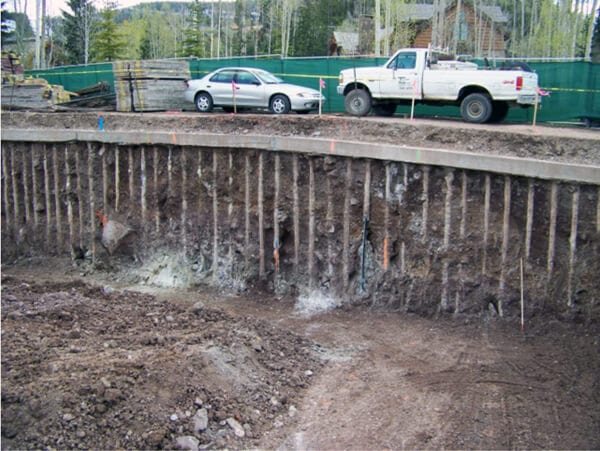
Vertical shoring is used as support for vertical structures such as walls and columns. Vertical shoring usually consists of vertical props, or braces, to provide support. Vertical shoring is often required on demolition work, or when removing or replacing walls.
When It’s Used: Vertical shoring is necessary for vertical surfaces, such as walls or columns, which pose a risk of collapse. Vertical shoring is also used while working on multi-story buildings.
2. Raking Shoring
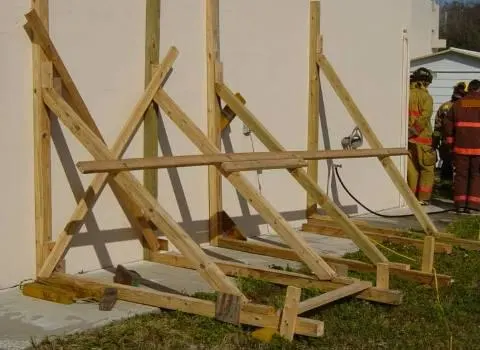
Raking shoring uses diagonal props or braces placed at an angle, to provide support. Raking shoring is used to stabilize walls, or structures that are at risk of falling due to weight changes or removal of surrounding areas.
When It’s Used: Raking shoring is often used in excavation work, for example, when a retaining wall needs additional support to avoid collapse.
3. Dead Shoring
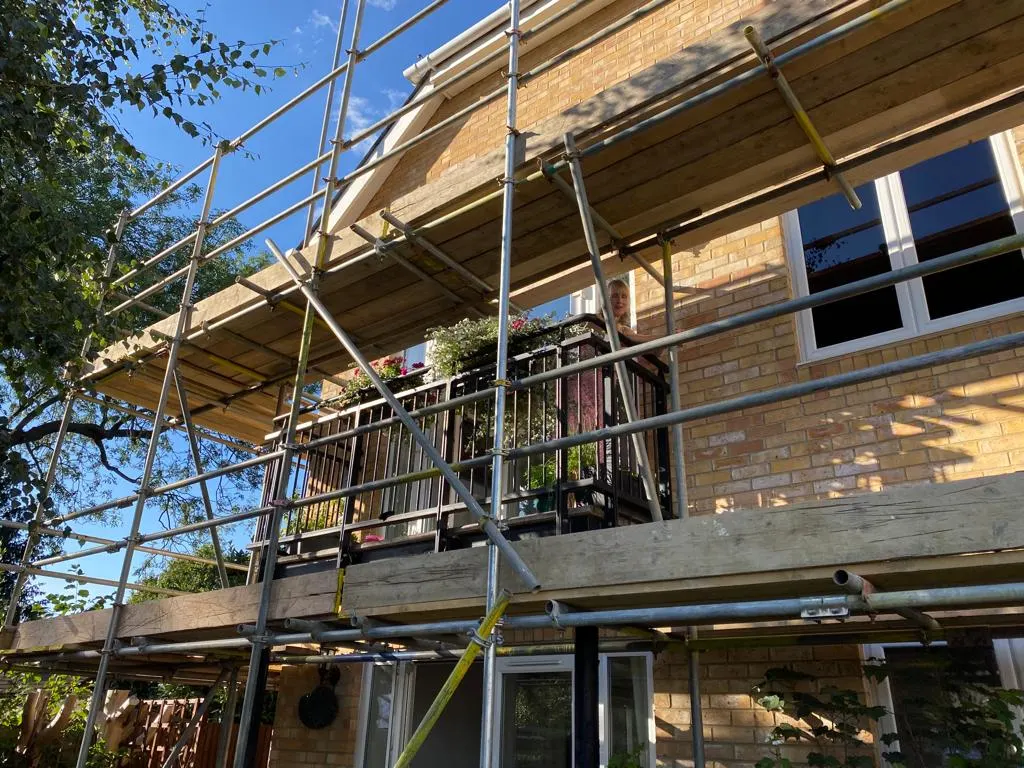
Dead shoring uses vertical supports, usually props, placed directly below the structure to support heavy loads. Dead shoring is used to provide support when working on foundations or large buildings that require support and will have major loads.
When It’s Used: Dead shoring is used while working on foundations, or when they are significantly stressed, such as when a building being constructed is very large or multi-story.
4. Post Shores
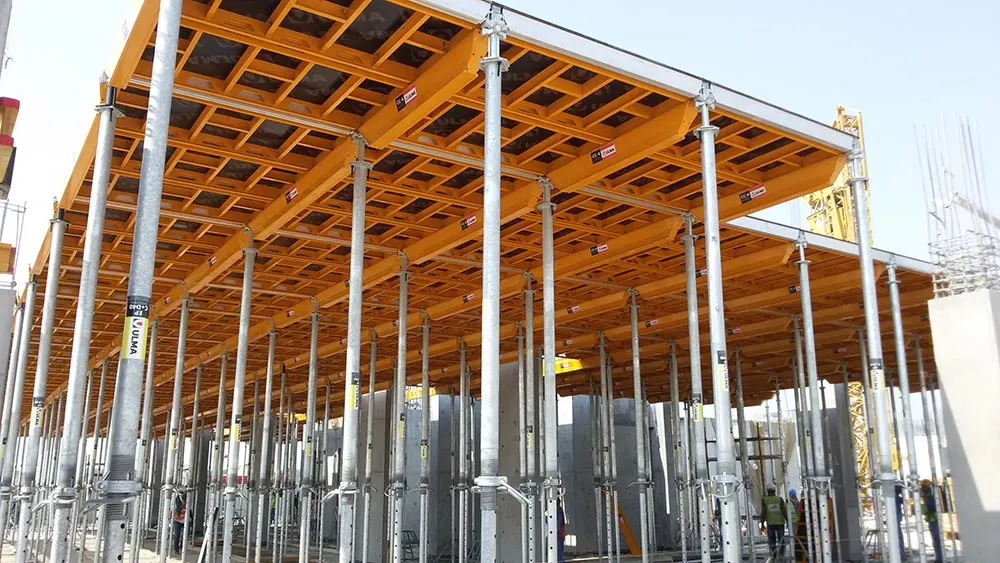
Post shores are vertical structural props that temporarily support structures. They are an adjustable temporary support option, offering more flexibility in use. Post shores can reduce any sagging or deflection in the floors/ceilings/roofs of a structure during work or construction.
When It’s Used: Post shores are used when a floor, ceiling, or roof needs extra support to prevent collapse or deflection.
5. Hydraulic Shoring
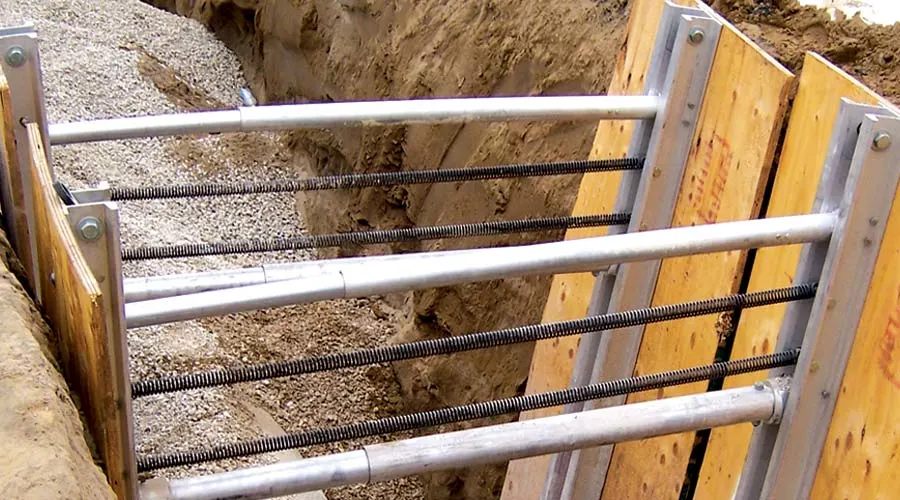
Hydraulic shoring utilizes hydraulic jacks or similar equipment to lend precise and measured support, allowing for adjustable support in relation to weight or load. Hydraulic shoring is suitable when a structure requires different points of support, depending on different loads.
When It’s Used: A hydraulic shoring system is likely used in a limited space or deep excavation–specifically with trench work or when digging deep foundations.
6. Excavation Shoring

Excavation shoring will provide support for soil and help prevent cave-ins during trenching or excavation. Typically, excavation shoring involves trench boxes or sheet pile supporting the sides of the excavated trench.
When It’s Used: Excavation shoring is primarily used in excavation work, particularly with projects that require workers to dig deep trenches or excavate for work below ground level.
When is Shoring Used?
There are various purposes for which shoring is used during construction:
- Demolition: Any time a part of the building is coming down, shoring will allow for other parts to remain stable.
- Excavation: Shoring also helps prevent soil from collapsing into the trench during excavation.
- Repairs or Renovations: In the event of repairs and/or renovations on a portion of a building, shoring allows the rest of the building to remain intact.
- Foundation Work: Shoring is extremely important when work is occurring on the foundation area of a building to prevent collapse while the new foundation is being built.
Role of Construction Chemicals in Shoring Systems
Construction chemicals contribute significantly to the overall effectiveness and durability of shoring systems. Construction chemicals enhance the performance of materials used in shoring systems like concrete and soil.
For instance, some chemicals are designed to strengthen concrete, providing opportunities to minimize shoring in situations where it may ultimately not be necessary.
Chemicals can also be used in concrete like retarders, accelerators, and superplasticizers to improve its performance in terms of setting time, hardened strength, and workability.
All of which allow for decreased shoring, thereby providing the potential for increased construction productivity, while allowing for engineering specification compliance.
Construction chemicals additionally create a more stable soil profile, and can potentially decrease soil’s potential movement during excavations or foundations. And improve the performance of the shoring system by providing the potential to decrease the chance of collapse during construction.
Conclusion
Shoring in construction is an important safety procedure employed to support structures during critical construction, demolition, or repair processes or phases.
Knowing the various types of shoring systems and when to use them is important to safety and stability on a construction site. Shoring supports structures at the critical stages of excavation, foundation work, or building renovation.
Shoring is a temporary support structure that holds materials in a proper place until the construction process is completed.
In addition to using shoring, materials that enhance the process, provide added stability, and reduce costs can also be used. The selection of a proper shoring system and materials will help the safety and completion of your construction project.
FAQS
What Are the Three Main Types of Shoring?
The three main types of shoring are vertical shoring, raking shoring, and dead shoring, each serving different purpose in stabilizing a structure during the construction process.
What is the Purpose of Shoring?
The purpose of shoring is to provide temporary structural support to mitigate and prevent a collapse of a building or structure during construction, demolition or repair.
Where is Shoring Used?
Shoring is utilized in construction work in situations where temporary support is required, specifically in situations involving excavation, demolition, or foundation work.
What is the Difference Between Shoring and Scaffolding?
Shoring is used to provide support to a structure, while scaffolding provides a platform to workers so they can access something elevated. Shoring is temporary support while scaffolding supports the workers.
What Depth is Shoring Required?
Shoring is typically required for trenches greater than 5 feet deep to help prevent cave-ins and keep workers safe.
What is the Difference Between Sheet Piling and Shoring?
Sheet piling is a method employed to help keep the sides of excavations stable by driving steel sheets into the ground. Shoring is the temporary support that is provided to a particular structure during construction.
Why Shoring Systems in Construction is Important?
Shoring systems are important for safety purposes. It forbids collapse, protects workers, helps stabilize the activities involved with construction.
What Material Could Be Used for Shoring?
Wood steel, aluminum, and concrete are common materials used for shoring, depending on the project’s needs.
Sagar Telrandhe is a Construction Engineer with a B.Tech in Construction Engineering & Management. Passionate about infrastructure development, project planning, and sustainable construction, he specializes in modern construction techniques, project execution, and quality management, contributing to efficient and innovative building.

